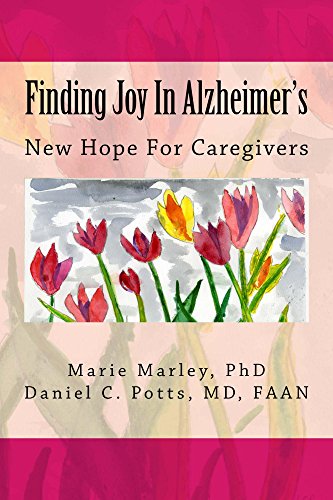Using Art to Bring Joy to Those Living with Alzheimer’s
Sign up and receive information on the latest news and updates.
 Lester Potts, the father of neurologist, Daniel C. Potts, MD, FAAN, had never held a paintbrush in his life. When he developed Alzheimer’s, he eventually began going to a daycare program. While there, they encouraged him to paint with water colors. Lester produced stunning paintings, and later became an artist of acclaim. His work brought joy to him and to all who viewed it. In fact, Dr. Potts and I admired his paintings so much, we chose one for the cover of our book, “Finding Joy in Alzheimer’s: New Hope for Caregivers.”
Lester Potts, the father of neurologist, Daniel C. Potts, MD, FAAN, had never held a paintbrush in his life. When he developed Alzheimer’s, he eventually began going to a daycare program. While there, they encouraged him to paint with water colors. Lester produced stunning paintings, and later became an artist of acclaim. His work brought joy to him and to all who viewed it. In fact, Dr. Potts and I admired his paintings so much, we chose one for the cover of our book, “Finding Joy in Alzheimer’s: New Hope for Caregivers.”
Research supports the notion that activities using art are beneficial to people living with Alzheimer’s. What’s more, art can usually reach those in the latest stages of the disease—even when they no longer talk or recognize loved ones. The purpose of this article is to provide down-to-earth, practical tips on how to use art to engage, comfort, communicate with, and bring joy to your loved one who is living with Alzheimer’s, either at home or in a care community.
The tips presented below are based on my personal experience as a caregiver, articles and books I have published, articles and books by other specialists in Alzheimer’s care, and information obtained during interviews with national experts, including Daniel C. Potts, MD, FAAN; Teepa Snow; and Deborah Shouse.
General Advice for Using Art Activities
- Focus on the process—not the final product.
- The person may not want to do an art activity on a given day. You should not insist.
- The activity should take into account the person’s life experiences and interests.
- You should actively participate in the activity with your loved one.
- Be flexible and follow where the person leads and what he or she wants to do.
Observing Art
Activities could include looking at picture books or visiting museums or art fairs. While perusing books with artistic photos, you can ask people open-ended questions about what they’re seeing. This will prompt reminiscing and help promote a bond with them.
Many art museums have docents trained to interact with people living with Alzheimer’s. If your area has such a program, it would be good to take your loved one there. After the tour, some museums also have an art therapist who will guide the person in creating works of art.
If your city doesn’t have a museum with one of these programs, you can accompany your loved one yourself. Some museums, including the Louvre, have apps that allow you to visit them on an iPad. This is especially helpful for people who, for one reason or another, can’t attend in person.
As with looking at picture books, be sure to ask the person open-ended questions about the paintings they’re viewing to promote reminiscing.
Painting
Painting is one of the more common activities carried out with people who have dementia. Give the person water colors, acrylic paints or pastel chalks. These allow your loved one to be freely expressive.
Some people might take right to drawing and painting, even if they haven’t tried the medium before. Others may need a special invitation, perhaps a request to help you on a painting project.
It can be intimidating for the person to be faced with a blank sheet of paper. You should participate in the activity through painting yourself, either on the person’s paper or on a separate sheet. Another way to overcome the person’s difficulty in getting started is to ask them to just paint the sky. You can also help the person get started by asking him or her to tell you what a certain color means to them. For example, you might ask, “Do you like red? What does it make you think about?”
You may place a painting in front of your loved one and ask him or her to replicate it or you can simply ask to the person to paint anything he or she wants.
“Hand paintings” are especially easy. In “hand paintings” the person places his or her hands on a sheet of paper and traces an outline of them. You may ask questions such as “What have your hands done?” You can then ask them to paint that.
Just as looking at art or going to a museum, you should ask open-ended questions about what they’re painting that will lead to remembering pleasant past events, which can bring pleasure to you both!
A longer version of this article was published on the Alzheimer’s Reading Room.
Marie Marley is the author of the award-winning ‘Come Back Early Today: A Memoir of Love, Alzheimer’s and Joy’ and coauthor (with neurologist Daniel C. Potts, MD, FAAN) of ‘Finding Joy in Alzheimer’s: New Hope for Caregivers.’ Her website, ComeBackEarlyToday.com, contains a wealth of helpful information for Alzheimer’s caregivers.
